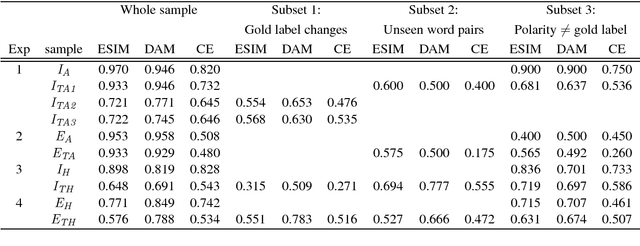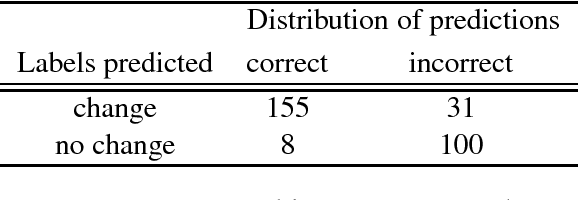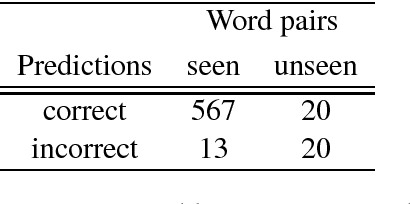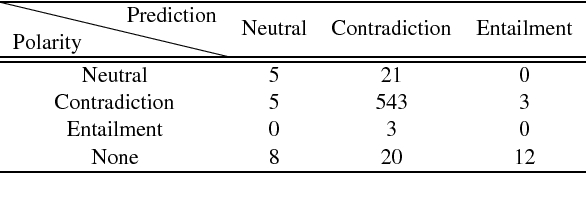Vicente Ivan Sanchez Carmona
Behavior Analysis of NLI Models: Uncovering the Influence of Three Factors on Robustness
May 11, 2018



Abstract:Natural Language Inference is a challenging task that has received substantial attention, and state-of-the-art models now achieve impressive test set performance in the form of accuracy scores. Here, we go beyond this single evaluation metric to examine robustness to semantically-valid alterations to the input data. We identify three factors - insensitivity, polarity and unseen pairs - and compare their impact on three SNLI models under a variety of conditions. Our results demonstrate a number of strengths and weaknesses in the models' ability to generalise to new in-domain instances. In particular, while strong performance is possible on unseen hypernyms, unseen antonyms are more challenging for all the models. More generally, the models suffer from an insensitivity to certain small but semantically significant alterations, and are also often influenced by simple statistical correlations between words and training labels. Overall, we show that evaluations of NLI models can benefit from studying the influence of factors intrinsic to the models or found in the dataset used.
 Add to Chrome
Add to Chrome Add to Firefox
Add to Firefox Add to Edge
Add to Edge